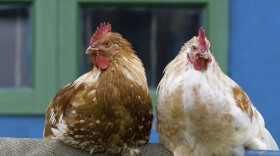Editor's note (3-1-2016) : The German company that licensed the product in this story has changed its name from BARDOT to BEAM.
A Purdue-created pathogen-screening device, which forgoes traditional microscopes and stains in favor of laser scanning, has been licensed by a German biomedical tech company
The device has a glamorous name—scientists call it BARDOT—short for Bacteria Rapid Detection Using Optical Scattering Technology.
What it studies is less than glamorous…BARDOT’s laser scans those distinctive bacterial blooms that show up on petri dishes after microbiologists swab and isolate certain microbes.
Arun Bhunia, a Purdue food science professor who helped develop the tool, says when spread on a petri dish, microbes such as salmonella create distinctive patterns of growth. The laser can identify different patterns and match them to a bacterial database.
“Each organism, based on their physiological properties or genus or species, form a different type of colony scatter-signature,” Bhunia says. “Essentially that gives us a different way to identify each of those organisms.”
Bhunia says traditional methods of detecting harmful pathogens can take a long time. For example, Indiana State Department of Health microbiologist Ryan Gentry says ID’ing a microbe such as salmonella currently takes several tests, such as molecular screening and more traditional, reagent-based stains.
“Right now we’re using molecular methods for pre-screening, and then using confirmation using biochemical testing, and that could take a few days, whereas using the BARDOT would take hours,” Gentry says.
However, Gentry’s department is a regulatory agency, and thus needs to test food with federally-approved devices…which BARDOT is not.
“We, even if we wanted to, could not at this time use the BARDOT no matter how wonderful we thought it was,” Department of Health Lab Director Judy Lovchik says. “Because regulatory testing is regulated.”
Lovchik says the biggest problem her department sees is in the pre-analysis stage, when bacteria can be compromised as it’s transported to a lab, through shifting or temperature changes. Because BARDOT still requires samples to be transferred, it wouldn’t solve that issue.
However, both BARDOT’s developers and state health department officials say the private food-production industry would, for now, be a great fit for the tool.
The technology has been licensed to German biotech company Hettich Labs.





